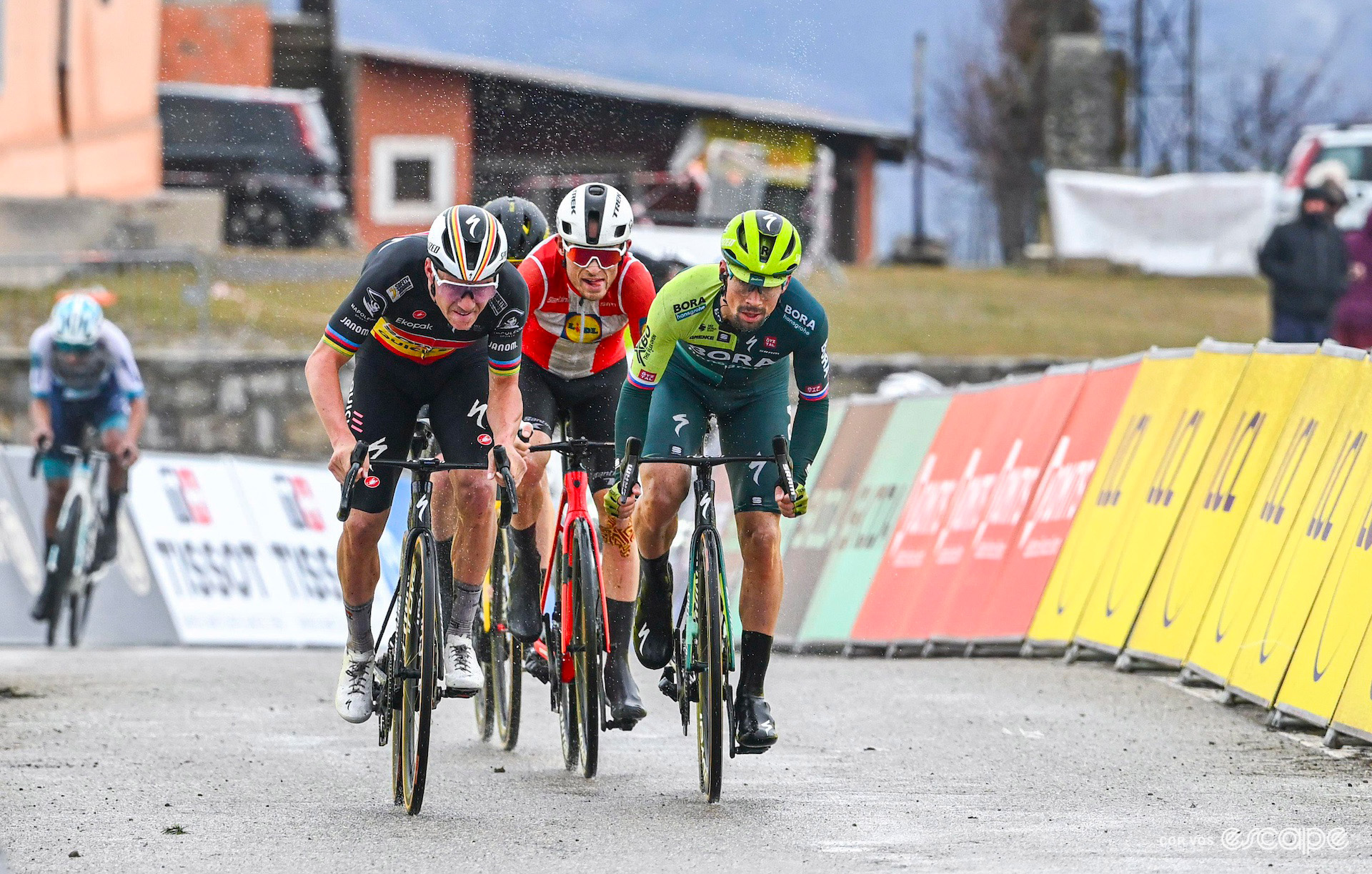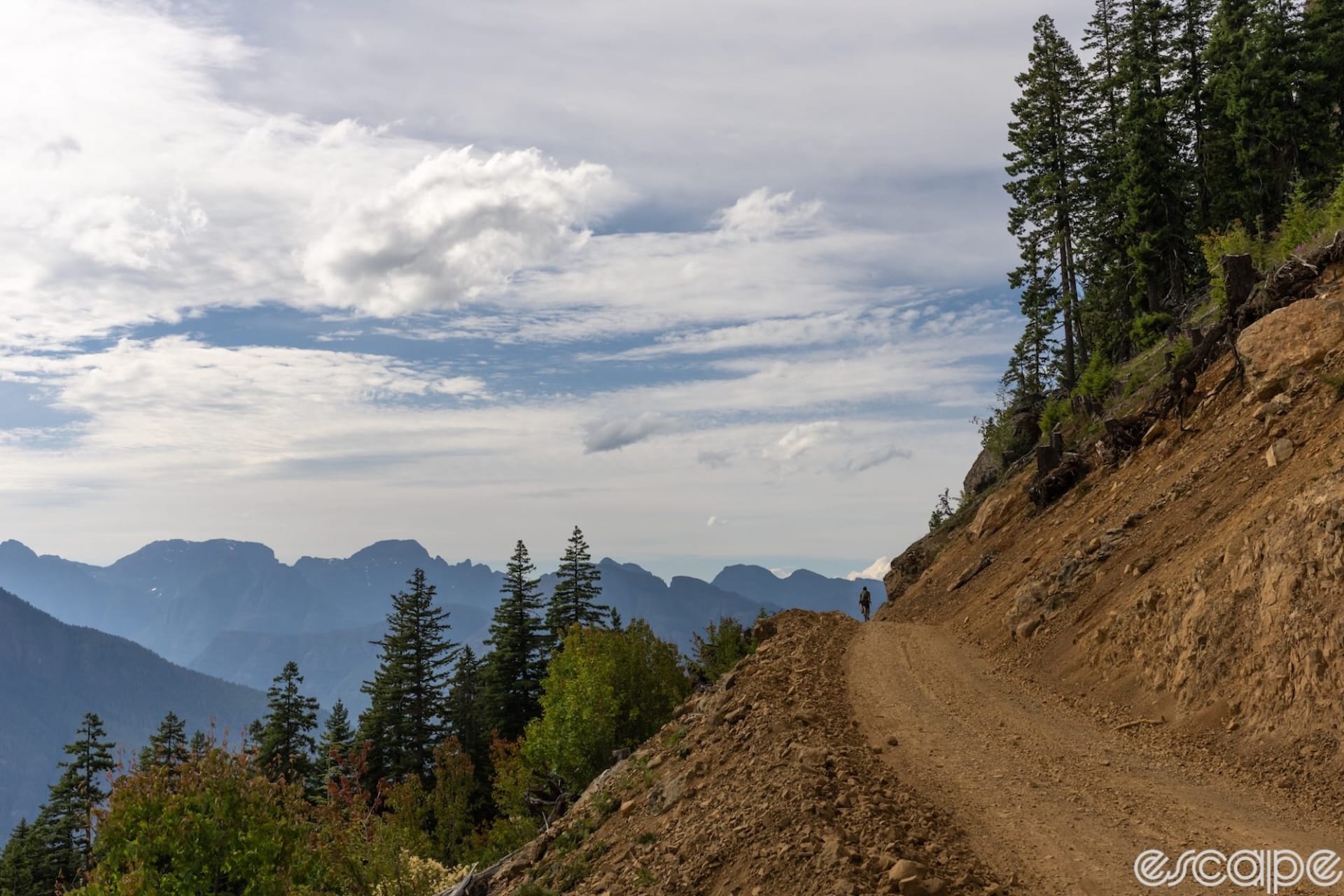The 2024 Tour de France has been a source of fascination since the sun set on Jonas Vingegaard’s second title last summer. The anticipation reached fever pitch with the promise of a four-way contest between all the biggest names in stage racing, not to mention the supporting cast of other Grand Tour winners and up-and-comers, but it was dealt a heavy blow this spring by one horrific crash.
Suddenly the build-up to the Tour became less about just how good everyone might be and more a question of: are they even fit to race? With that in mind, the Critérium du Dauphiné, the traditional pre-Tour warm-up event, has taken on additional meaning this year as a number of favourites make their return to competition; and, in the absence of Tadej Pogačar – who’s recovering post-Giro d’Italia domination – and defending champion Jonas Vingegaard, it’s more open than ever.
In fact, perhaps the only GC riders who come into the Dauphiné without significant doubts draped over them are Carlos Rodríguez – who claimed his long-awaited first ever stage race win in Romandie last month – and the Visma-Lease a Bike duo of Matteo Jorgenson and Sepp Kuss. And even then, none can lay claim to Pogačar status at the recent Giro.
- Is recovery on track for Primož Roglič, Remco Evenepoel, et al.?
- Will Bora-Hansgrohe dominate on the road as they do on paper?
- Can Ineos Grenadiers and Rodríguez take it to the big names?
- What will the Dauphiné tell us about a "Plan B" for Visma-Lease a Bike if Vingegaard isn't up to snuff?
- Is anyone close to good enough to match a Giro-esque Pogačar?
Not one of the GC contenders at the Dauphiné is unencumbered by doubts or question marks as the Tour de France beckons. All this makes the pre-Tour stage race more important than it’s been in a long time. This will be one to watch closely.
Race of recovery
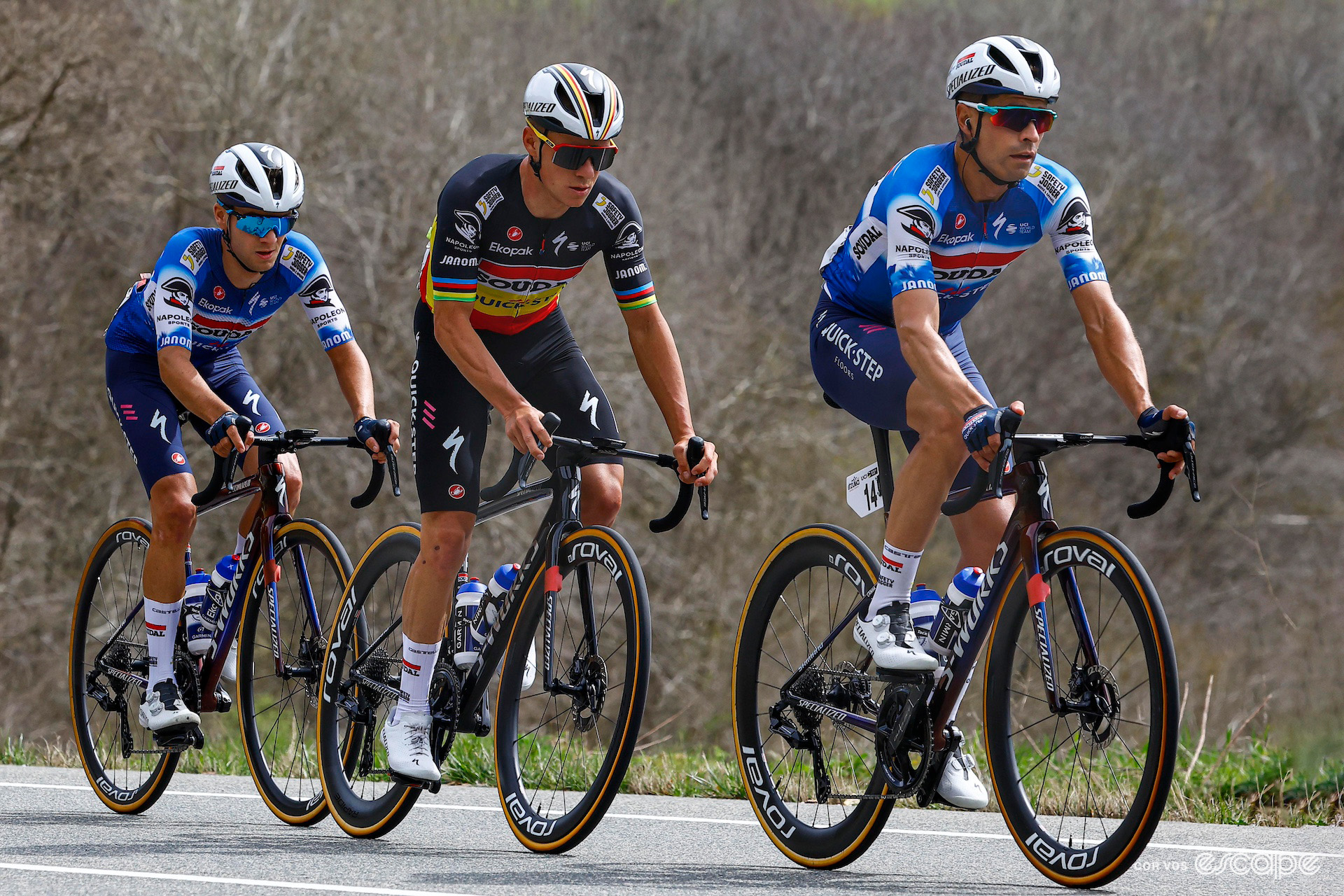
Both Roglič and Evenepoel were among the big names who were forced to abandon Itzulia Basque Country on stage 4 in early April, and both are making their comebacks in the nick of time. That said, while Roglič had more superficial injuries to recover from and was able to resume training without too much delay, Evenepoel's fractured collarbone and scapula took rather longer to heal, and the expectant Tour debutant has played down his chances at the Dauphiné.
“I am looking forward to returning to racing, I’m in a good place after the crash in Itzulia and the injuries I sustained there, but there is still some work to do so I get back to my top shape," Evenepoel said in his team's line-up announcement for his debut Dauphiné appearance. “I’m happy to discover the Dauphiné, but I will look less towards my general classification position, as this will be more a chance to return to the race rhythm and see where I’m at.”
The two favourites are not the only riders on the comeback trail. Evenepoel's new lieutenant Mikel Landa followed his leader to the hospital after breaking his own collarbone and several ribs on stage 5 of the same race, and Sean Quinn (EF Education-EasyPost) is another Basque casualty to make his return to stage racing this week, though the American has got a head start with a couple of one-day appearances, including a maiden pro victory in the US national road championships.
And then of course, there's Mr. Froome, whose broken scaphoid is better in time for the race he's won three times in his interminable long career, all in seasons he also triumphed at the Tour.
A sign of things to come
Raising Froome's exploits between 2013 and 2016 raises the question that always circles around the Dauphiné: will the winner earn man-to-beat status for the Tour?
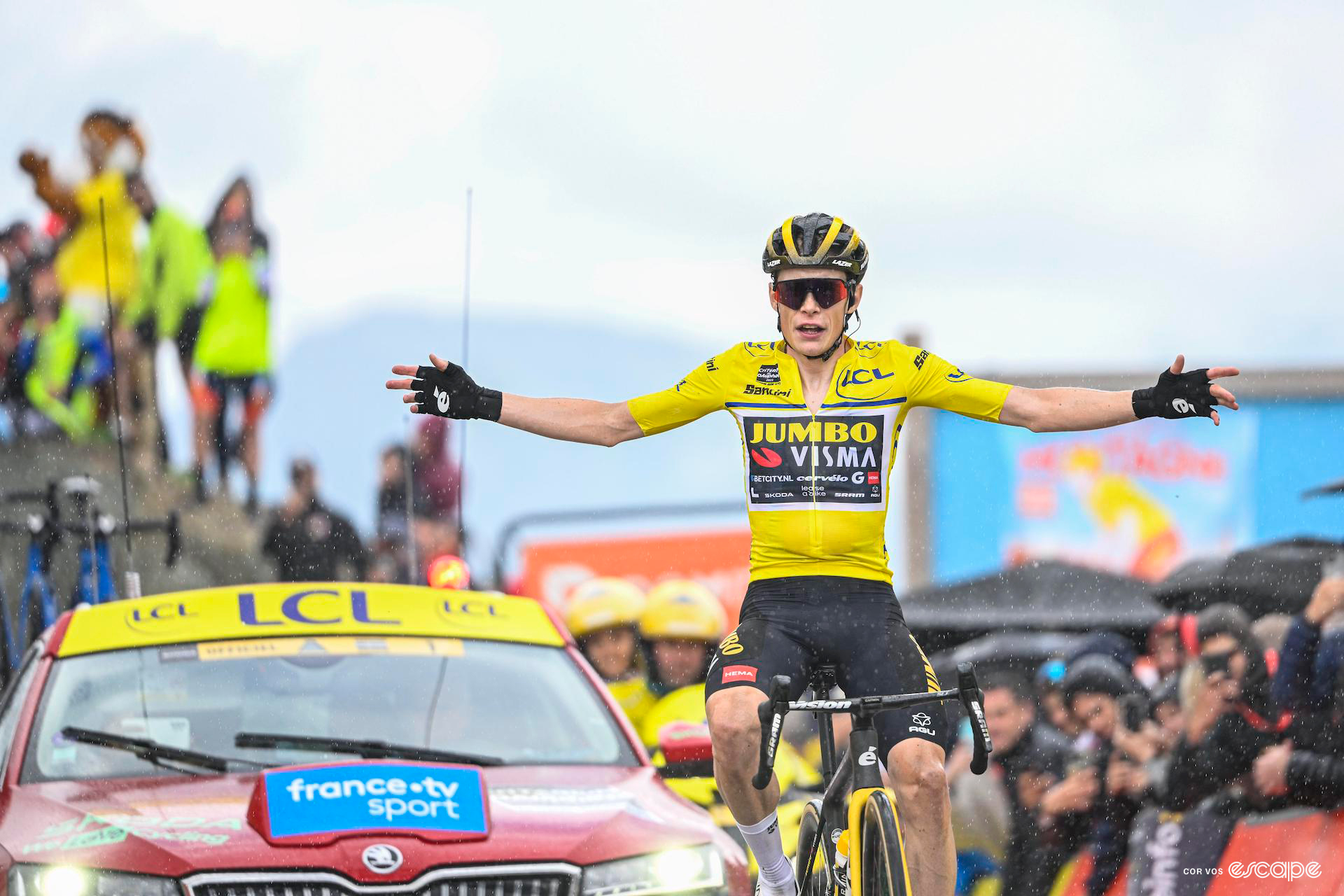
We have to acknowledge the absence of both reigning champion Vingegaard and his four-year archrival Pogačar – although even if he hadn't raced and won the Giro quite so emphatically, who's to say the Slovenian would opt for the Dauphiné over a dominant run at his home tour for the first time since 2020? But at the same time, there are mitigations in the other direction too: Vingegaard is still recovering from a battery of injuries and Pogačar is (probably) really quite tired, so they too would be unknown quantities ...
So, unless there's a wacky outsider victory à la Andrew Talanksy (2014), Jakob Fuglsang (2019), or Dani Martínez (2020) – apologies to all – the winner of the Dauphiné is sure to put a target on his own back. And indeed, the entire top 10 will answer a lot of questions. Perhaps more so than the Dauphiné has done in years.
It's been more or less a foregone conclusion in the past two seasons – Jumbo-Visma dominated with Roglič and Vingegaard, the latter arguably strongest in both editions – but before then, there had been an intriguing run of results that diverged pretty dramatically from the Tour that followed. From 2019 thru 2021, no one on the Dauphiné's final podium reached such heights at the Tour, which again is partly due to Pogačar's chosen programme, but it does present the notion that the Dauphiné's value may have diminished.
That's surely about to change, though. The top teams in attendance certainly seem to be approaching it with serious intent.
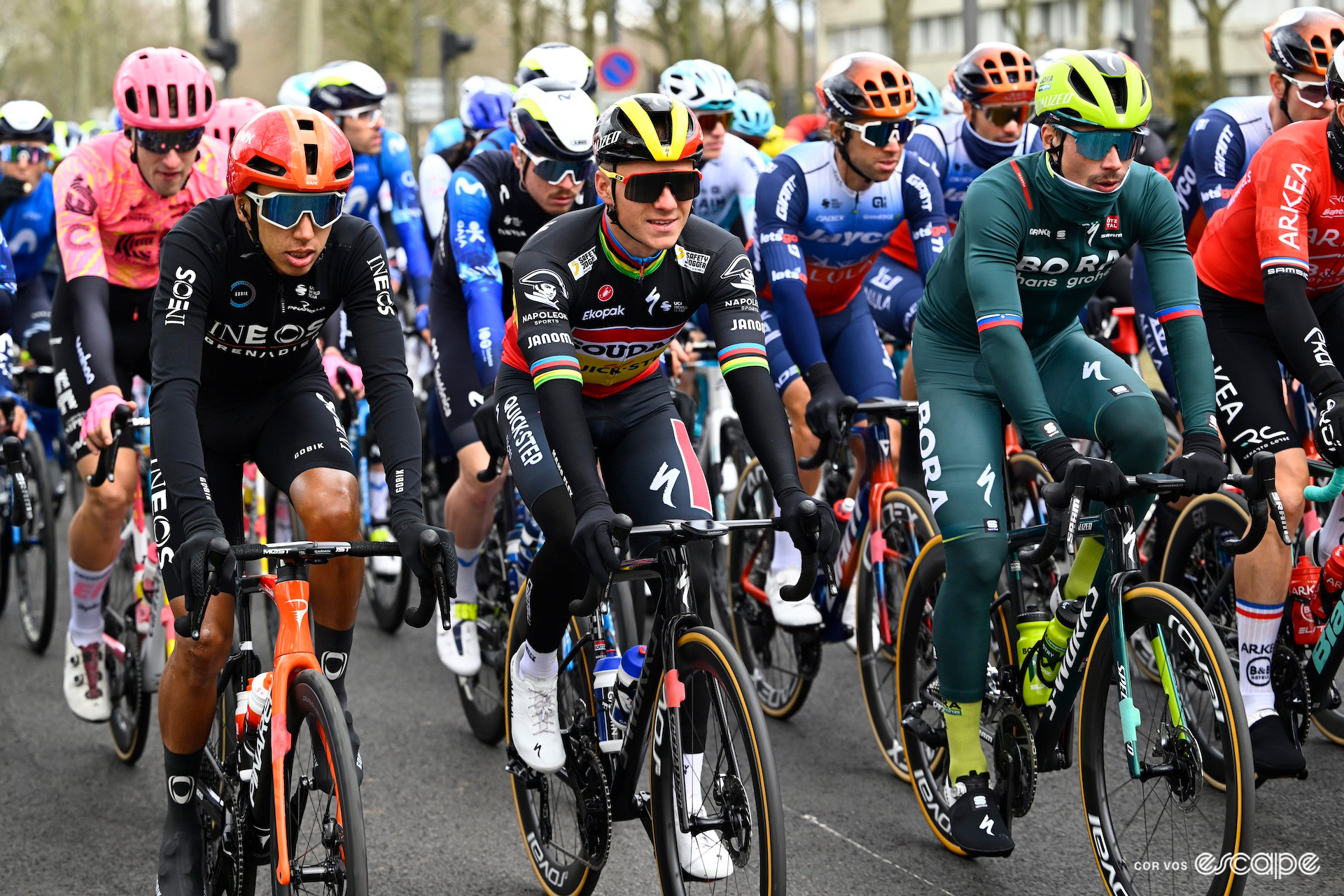
Auditions and rehearsal
It might be the only race contained under the same umbrella as the Tour de France, but the Dauphiné is not the only pre-Tour "warm-up" event. The GC riders can pick between the French stage race and the Tour de Suisse (9-16th June), which will see reigning champion Mattias Skjelmose up against Enric Mas, Richard Carapaz, Felix Gall, Lenny Martinez, Egan Bernal and Tom Pidcock. Meanwhile the Baloise Belgium Tour (12-16th June) provides an option for sprinters like Jasper Philipsen, Fabio Jakobsen, and Gerben Thijssen. But the Dauphiné is still more often than not the first choice, a chance to hunt down yellow jerseys in a microcosm of the summer's main event.
It's a dress rehearsal for the Tour, for teams and their staff. Take Bora-Hansgrohe, for instance: the German outfit is one of a few teams to have already all but confirmed their eight-man Tour squad, and almost the entire lineup is heading to the Dauphiné, all except Danny van Poppel who raced two weeks of the Giro before bowing out on the morning of stage 16.
Roglič is joined in France by Nico Denz, Marco Haller, Jai Hindley, Bob Jungels, Matteo Sobrero, and Aleksandr Vlasov – all but Haller and Vlasov are Grand Tour stage winners – as they undergo a mock exam for the summer final.
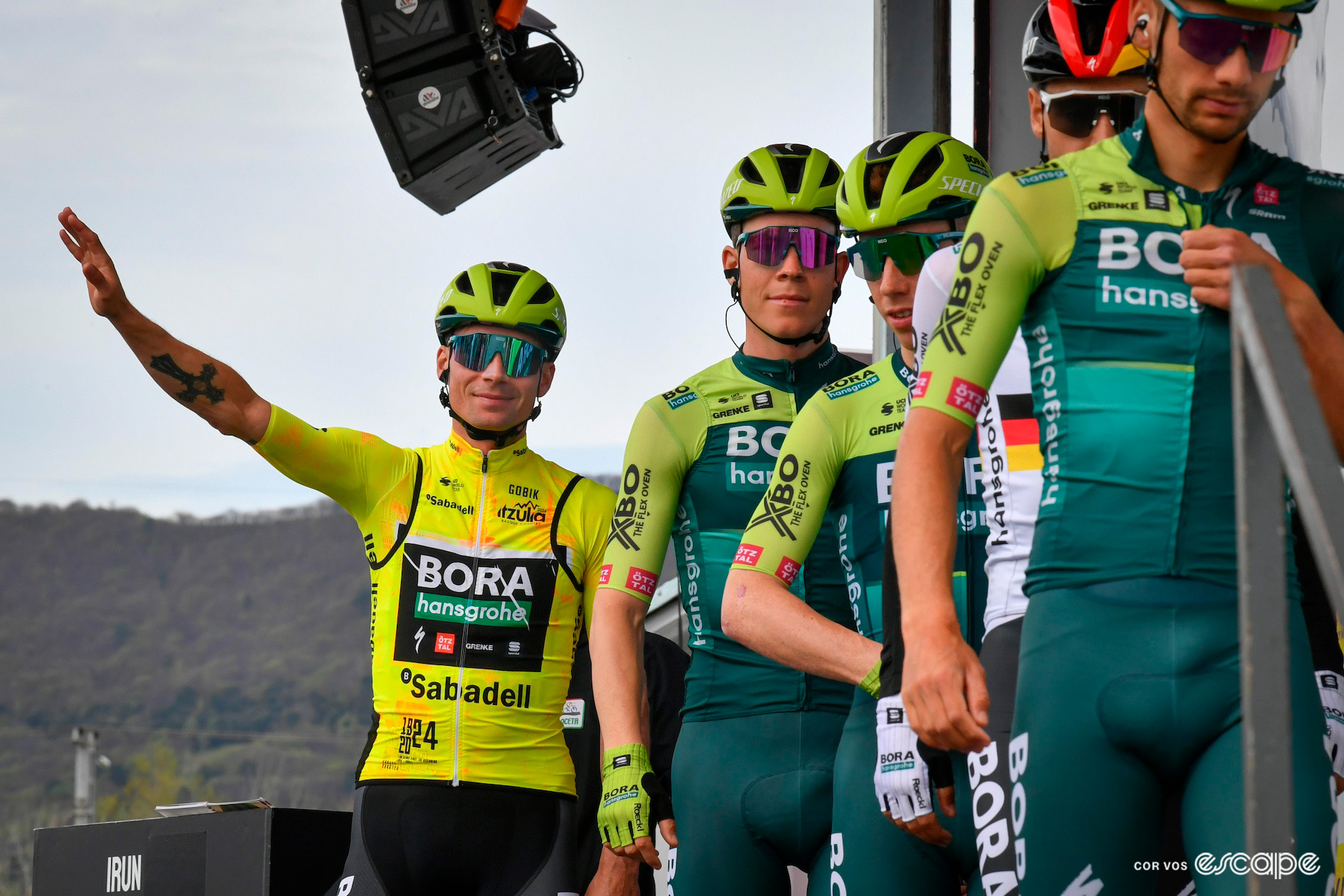
A number of other teams are also sending predominantly Tour-destined squads to the Dauphiné, many of them coming down en masse from one or other of the popular altitude locations for one last chance to audition.
While some domestiques and stage hunters will be hoping to put their names firmly under the noses of team selectors, others will test themselves against one another and their own past performances in a bid for a particular role come the Tour.
It's for this reason that the dominant team of the past two years will be one to watch, especially from Wednesday's time trial onwards, as Sepp Kuss and Matteo Jorgenson share Vingegaard's temporarily vacated shoes.
“As a team management, we are curious to see how things go with the guys riding the Tour," said Visma sports director Frans Maassen. "We still don't know exactly which riders will be in the squad because we don't know if Jonas Vingegaard and Wout van Aert [ed: who just made his return in Norway] will be fit again. We have to wait and see. We just want to do as well as we can in this race. It's a race we'll have fond memories of.”
Of course, Kuss is on paper a natural successor of GC leadership as reigning Vuelta a España champ, but his new teammate Jorgenson has thrived in his new home at Visma-Lease a Bike, unfazed by their wealth of possible leaders. The winner of both Dwars door Vlaanderen and Paris-Nice has recent form on his side, while for the most part, Kuss has gracefully slotted back into super-domestique duties in what has otherwise been a relatively quiet spring, results-wise.
That said, the 'Eagle of Durango' did come into 2024 with more confidence in his own abilities and status, even telling Wielerflits, "strategically speaking, it doesn’t hurt to start [the Tour] with two leaders.” Prescient, and as we've learned, while Kuss has proved the consummate teammate, he's also shown what he can do when bestowed the mantle of leader.
Both will be riders to watch, and it would be not be at all surprising to see them rise to the top – not a moment too soon for Visma-Lease a Bike, a team overdue some good fortune.
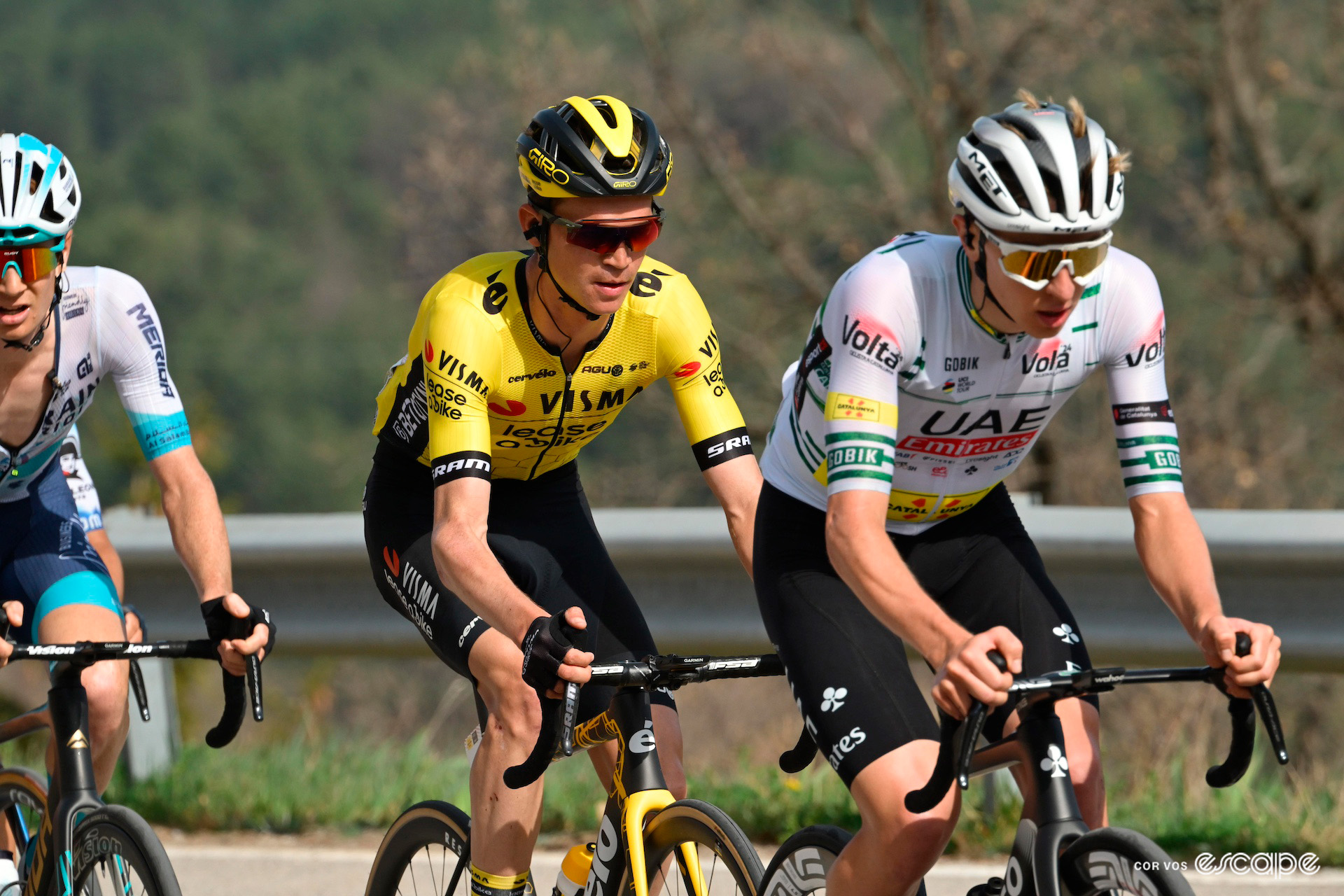
The UAE Team Emirates squad will also seek to answer questions, or confirm their value, with Pogačar watching on from altitude. Itzulia Basque Country winner Juan Ayuso is acting team leader in the meantime, racing the Dauphiné with teammates Nils Politt, Pavel Sivakov, Marc Soler, and Tim Wellens who are all expected to join Pogačar, Adam Yates, and João Almeida at the Tour. Though Yates was deputy last summer and joined the Slovenian on the podium in Paris, this year Ayuso is being touted as a plan B should the recent Giro winner fade, but after crumbling at the end of the Tour de Romandie, the young Spaniard may have something to prove on a team bursting with talent.
Elsewhere there will be questions as to the form and fitness of the likes of Tao Geoghegan Hart, still building back from his season-ending crash at the 2023 Giro, and whose performance at the Dauphiné may affect his role alongside reigning Tour de Suisse champion Skjelmose in the Lidl-Trek camp. We'll also be looking for signs of friction at Bora-Hansgrohe as Vlasov jostles for more agency in the team now built around newcomer Roglič.
As for the French? David Gaudu is back at the Dauphiné which has been happy hunting ground in the past, and the Breton rider will be itching to do well after a crash-marred spring that included withdrawals from both Paris-Nice and Itzulia Basque Country, but also included the bright spark of victory at the 1.1-classified Tour du Jura. Gaudu then lined up at the Tour de Romandie in support of teammate Lenny Martinez, but leads the Dauphiné lineup in a bid for leadership at his home Grand Tour.
In short, by the end of eight stages, including one time trial, five uphill finishes, and a brutal final three days in the mountains, the summer's GC competition will have a much more discernible shape. Nothing will be certain – when is it ever – but plenty of questions will get some sort of answer.
By the end of the Dauphiné, we should have a much better idea of what sort of excitement to expect at the Tour: hotly contested blockbuster thriller or a wearing race for second.
Did we do a good job with this story?

